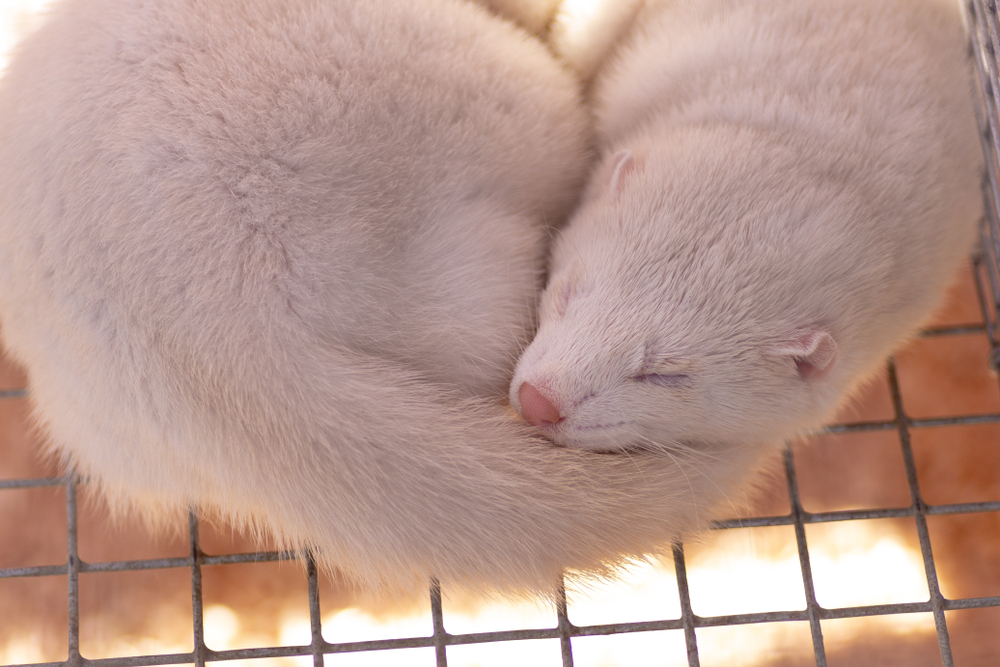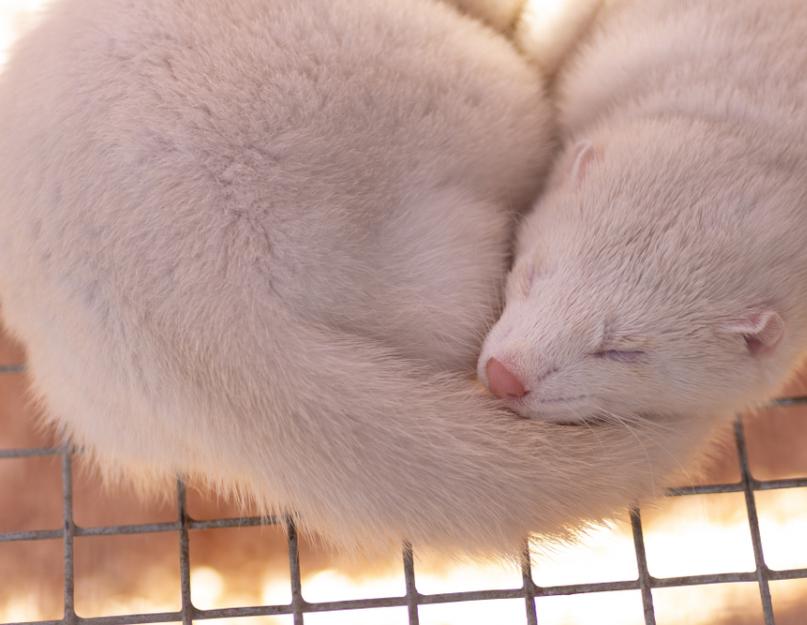The acquisition of mink coats is a sign event in life. This purchase is allowed not often, it should be prepared not only. There is a lot of mink used for sewing fur coats. It is useful to understand the features of the products, the effect of the structure and origin of fur on its characteristics and cost.
Overall Mink Fur Characteristics
Mink fur - thick and resistant to wear.
The skins of mortops belong to the festers - raw materials obtained on the hunt or from animal farms. The fur market of animals predominate in the fur products market, which are grown in special conditions. The mink fur is characterized according to the following criteria:
- thickness;
- hair length;
- location on the body of an animal (topography);
- square Square;
- the ratio of its length and width;
- sophistication.
Mink fur is considered particularly densely, because 1 cm 2 can be located up to 22,000 hairs. Hair length is relatively short. It is usually about 2.5 cm. On the womb of the animal, the fur is the most thick, on the ridge - long. The difference between the length between the hairs may differ 2 times.
Resistance to wear reaches 85%. Determine the wear resistance of all the fur with comparison with the fur of the otter, which is considered to be referenced. The scope of natural furs of the otter is considered to be 100%. Mink is an amid animal. The maximum resistance to wear has animals that dwells only in water. Minimum indicators have land representatives, such as rodents. Mink dwells in water and on the surface of the earth. Wear resistance of fur corresponds to the lifestyle of the animal.
Under the total area of \u200b\u200bskirt, raw materials are divided into categories:
- especially large
- just large
- medium
- small.
The largest individuals have skins with an area of \u200b\u200bmore than 9.5 dm 2, small - 3 dm 2.
Ostialness - the amount of hairs of the fluff per biting hair, the mink fur makes an average of 20,000 units.
The merchandine car classification of mink is different:
- products from animals grown on the will are divided into 3 varieties;
- in the number of defects - on fur with minimal flaws, medium and large;
- volny animals differ in habitats;
- raw materials from cellular minks are classified by 2 varieties;
- all mink fur is separated by colors and sizes.
Fur of the first grade is called full-haired. They have brilliant cover with thick masculine hairs and down. Own (Mebel) - pure, homogeneous. On the edges of the fur at a distance not exceeding 3 cm, light blue may be noticeable.
Samples of the second grade have a less complete-haired fur. He glitters. Asks and Pooh are not fully developed. The tail may not be too pubescent. Synery on Mezrah has the size of large than in the mechanics of the first grade.
Fur mink of the third grade is mined only from free animals. They have a smooth, shiny, thick half-wax fur with a blue inland surface. Pickness of the tail leaves much to be desired.
Interesting differences in evaluation of defects. So, if the cellular mink to small fur defects include gaps reaching 15% of the total area, then for furs of this category, obtained from free animals, the magnitude of the gap can reach 25%.
Important! Skirts from spring animals with spent yolmers raged, yellowish rims are not more evaluated than a 25% of the cost of the fur of the first grade with large sizes. Skirts of animals who lived on the will, mined in the offseason, should not be accepted at all.
Types of Norch
 A few varieties of mink, which is used to produce fur products, is known.
A few varieties of mink, which is used to produce fur products, is known. It is now difficult to believe that the mink fur was not always so popular. For the first time, animals began to breed on American farms at the end of the last century. Amazes the information that in 1910, in Canada, only 16 minks contained in cells.
In Northern Europe, the Soviet Union of Animals brought about 100 years ago. However, this type of activity was in passive condition. Everyone was not before. Demand began to grow everywhere in the mid-60s of the last century. In Western states promoting products, marketers seriously occupied. In our country, the economic possibilities of stimulating beasts have gradually began to appear. Now everywhere popularity has 3 main types of fur.
Russian mink fur
Russian mink - very warm, slightly shaggy. Fur elongated sudder and high thick letters. Approximately 80% of the fur has brown variants of the colors of all shades. Russia produces more than 2 million skins annually. The fur of the highest possible quality is not more than 15%. Products have greater demand due to affordable prices. Quality is largely depends on the geographical location of the farms, the management methods for them. Diluted in the farms of North American representatives of rock brought to Russia almost 100 years ago.
Scandinavian type
The most popular Scandinavian mink. It was brought to the northern countries of Europe at the beginning of the last century. Among the whole mink products, produced as a result of the cultivation of animals, this fur is 80% of the global volume. Smooth, beautiful assistive has a middle length, sub-view - high and thick. Finnish variety has a higher fur, the Danish fur is slightly lower.
Thanks to the efforts of genetics, it was possible to get a huge number of furs of natural colors and shades, each of which has a special trade name. For example, Mahagon fur has a rich brown color of dark shades, pastel - brown with a gray tint. All fur products of the Scandinavian Group have high prices.
North American Group
North American Mink Fur is mined from animals with US Farms and Canada. Because of small-sighted hairs and thick high pouring, the products resembles velvet. Among the American mink fur, a black color dominates. This segment takes 52% of the total number of North American mink. The quality of the fur of this group is significantly different from the farm that brends animals. Therefore, prices differ greatly. The most beautiful North American fur is Blackglama. Products have a very dark black color resembling oil color.
There are more than 200 colors of mink fur fur. In practice, it was strengthened mainly 20 shades.
In recent years, animals have been activated in China. According to unofficial data, it is known that about 15 million skins of all types of mink are already produced in this country. However, the climate in the country is very peculiar, the experience of specialists only begins to appear. Therefore, so far the Chinese mink has not gained more popularity.
Types of modern fur processing
High-quality mink has a beautiful form of fur in its traditional working. However, designers and fashion designers in the heat of creativity continue to create new products. There are many types of modern machining of fur, changing its appearance:
- perforation,
- laser haircut,
- normal haircut,
- plucking,
- dyeing,
- toning.
The processing can be differentiated with staining of the isgery, with toning dumping, eye-lightening. Modern computer (digital) staining on the fur can create any patterns.
Planning a selection of fur coats, decide on the place of purchase. Do not trust products on the market. Mink products are recommended to be purchased in special salons with professional consultants. You will be able to characterize the product comprehensively, describe all the advantages of the mink, pay attention to possible weaknesses. It is necessary necessary at no hardening of the fur coat, check the availability of certificates, make sure that the manufacturer's authority. A mink fur coat will be able to warm and delight for a long time, until the next model is purchased.
It is interesting to see how they are bred and contain mink.





